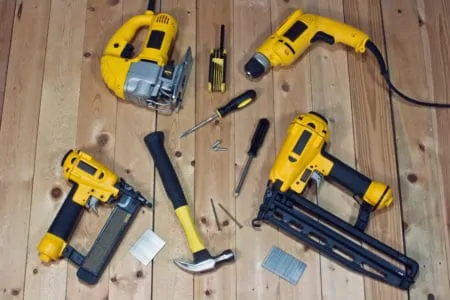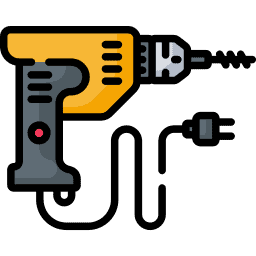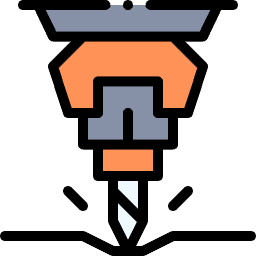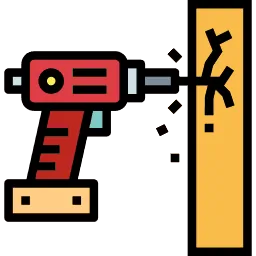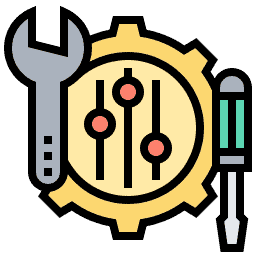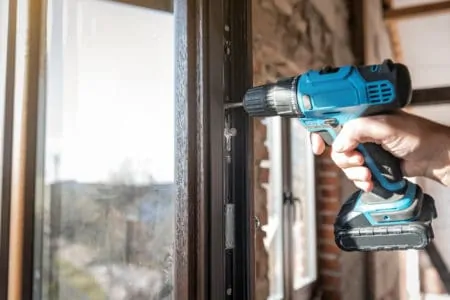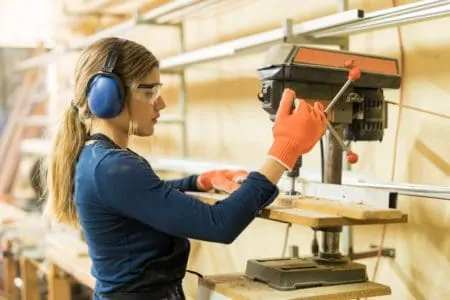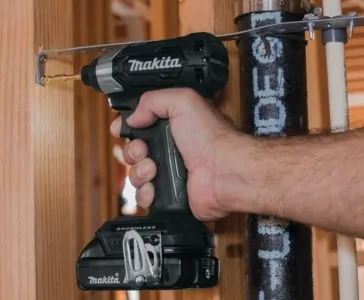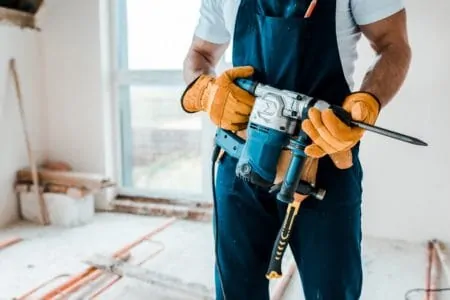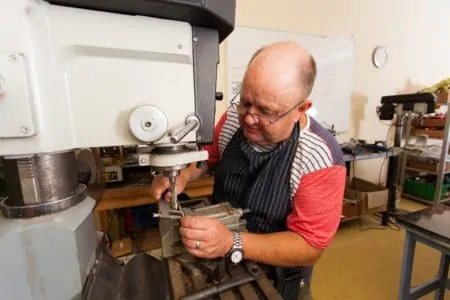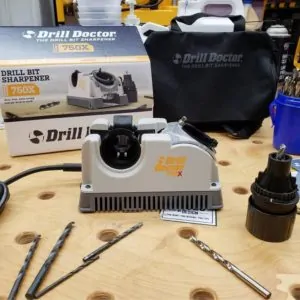Who in their wildest dreams could have known there were so many different types of drills out there. There are more drills than there are days in the month. And they all have a specific job.
Some are common varieties like hand drills and cordless models, but other drill types include air and pillar drills. So, with so many to choose from, let’s explore your options.
Key Takeaways
- There are various types of drills, including hand drills, cordless models, air drills, and pillar drills.
- Hand drills like eggbeater drills and brace drills are suitable for woodworking and model making due to their precision.
- Pneumatic drills are powered by compressed air and are more suited for industrial and commercial settings.
- Hammer drills and drill presses are powerful tools designed for drilling through dense materials like stone, masonry, and metal.
31 Types of Drills
To kick this off, we thought we would start with the most well-known types of drills with a timeless design.
1. Eggbeater Drills
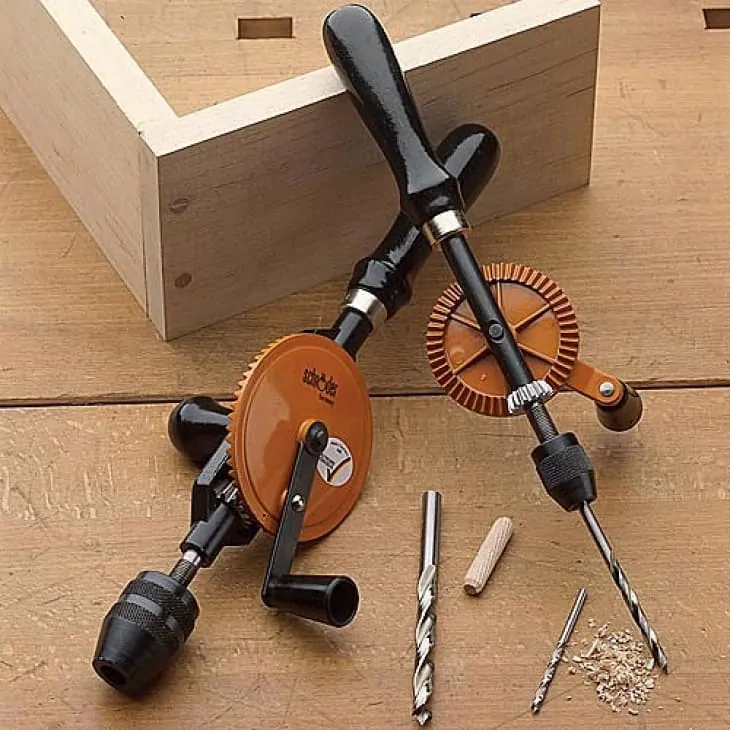
This drill is a throwback to the past. The quirky “eggbeater” name is self-explanatory. These drills are not especially powerful, but they are accurate, making these tools a staunch favorite with woodworkers and model makers.
Whenever you want to make delicate and precise holes in softer material, this is the drill to use. It gives you a higher level of control and allows you to work with such minute margins. They operate via a hand-crank that drives the gears to produce drill bit rotation.
Pros
- Easy to master.
- Go-anywhere tool.
- Precise.
- No power supply required.
Cons
- Slow work rate.
- No power.
- Only suitable for soft material.
Product Specs
| Type | Hand drill |
| Used for | Model making, Wood, Furniture and cabinet making |
| Difficulty | Beginner |
| Power source | Manual |
| Price | $ |
2. Brace Drills
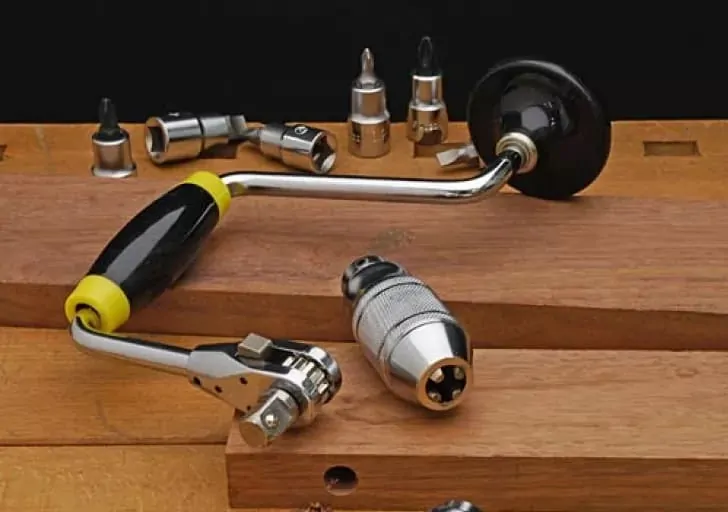
The oldies are the best, and this brace drill is something you would have found in your Grandpa’s toolbox back in the day. It is a U-shaped drill used to countersink precise holes in softer material like wood and sheet metal.
The top spindle holds the drill in position while the middle of the U-shape acts as a spindle grip to rotate the drill bit. The design of the off-set axis in the handle gives greater torque and precision. Again, find a woodworker who doesn’t own this tool, and we’ll be surprised.
Pros
- Easy to master.
- Precise.
- Delicate.
- No power required.
Cons
- Slow.
- Not suitable for mass drilling.
- Requires effort.
Product Specs
| Type | Hand drill |
| Used for | Model making, Wood, Furniture and cabinet making |
| Difficulty | Beginner |
| Power source | Manual |
| Price | $ |
3. Bow Drill
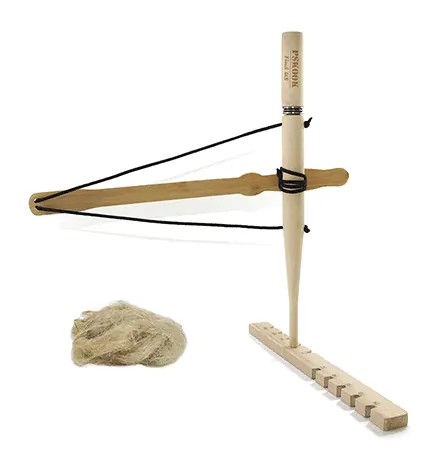
This drill is a real slice of history. It is an ancient tool most commonly associated with fire-making, because of the friction it generates when operated. It looks a little like a crossbow, hence the name.
The bow moves up and down the shaft of the drill, turning the spindle, while a weight at the base of the drill acts as a flywheel.
As we said, this drill is mainly used for starting fires because of the amount of heat it generates due to the friction of the moving parts. However, some woodworkers and dentists have adapted them to act as drills.
Pros
- Easily causes fires.
- No power source required.
- Precise.
Cons
- Hard to master.
- Slow work rate.
- Specialist tool.
Product Specs
| Type | Hand drill, Specialist drill |
| Used for | Model making, Wood, Furniture and cabinet making, Dentistry |
| Difficulty | Advanced |
| Power source | Manual |
| Price | $ |
4. Crank Drills
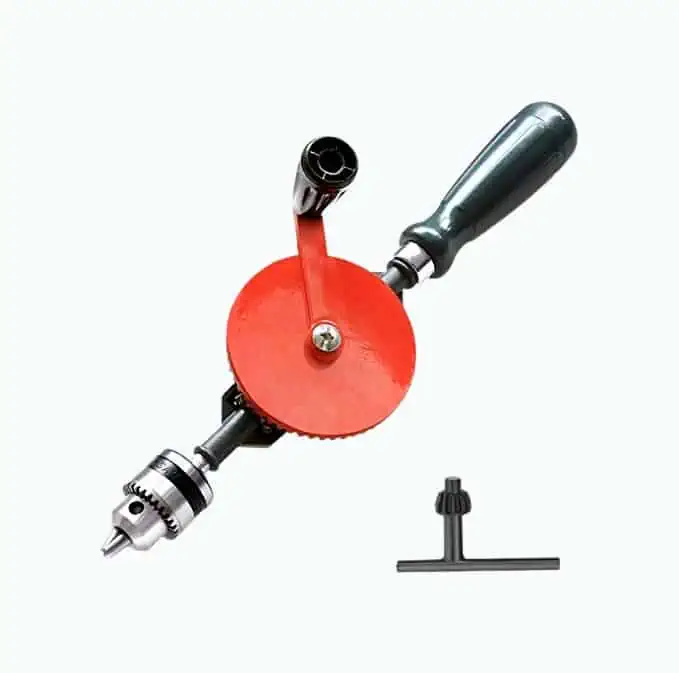
A crank drill is a bit like a beefed-up version of the eggbeater drill. It makes deep holes in material like metal-alloys and steel. Also, if you are drilling curved surfaces, once you center this drill, it is very accurate.
What sets this drill apart is its high helix angle — the angle between the helix and the axial line (the surface of whatever you are drilling into). This increases the penetration efficiency, improving the cutting ability of the tool.
Pros
- Hand operated.
- Precise.
- Make deep holes.
- Highly efficient.
Cons
- Slow.
- Specialist tool.
- Requires physical effort.
Product Specs
| Type | Hand drill |
| Used for | Metal, Steel, Curved surfaces |
| Difficulty | Advanced |
| Power source | Manual |
| Price | $ |
5. Gimlet
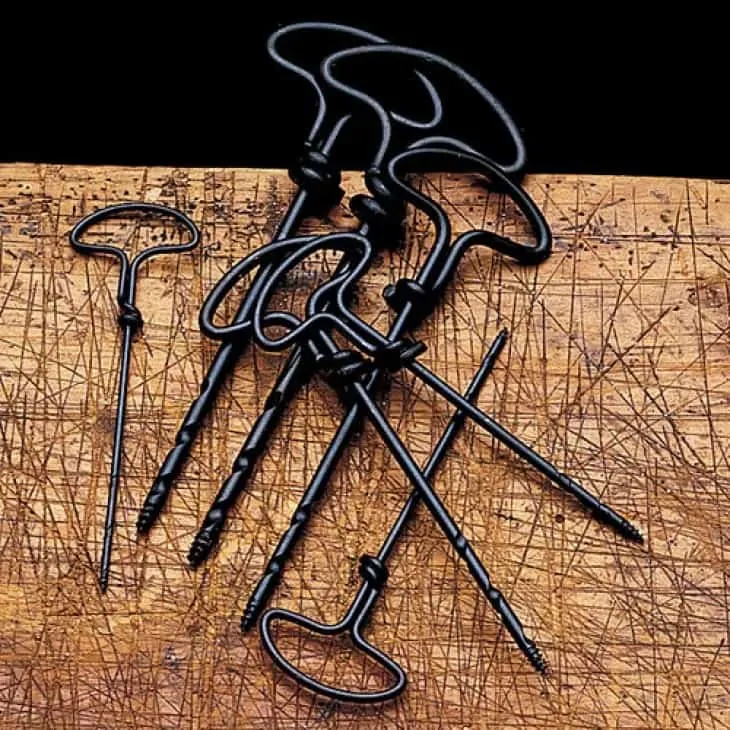
No, Gimlet is not a character in The Lord of the Rings. A gimlet is a smaller version of the brace drill. So it resembles a corkscrew but is used to make holes in wood. It also makes pilot holes and holes to start screws and nails in woodworking.
Pros
- Makes pilot holes.
- Bores water pipes.
- Acts like a mini-auger.
Cons
- Small.
- Hand-cranked.
- Slow work rate.
Product Specs
| Type | Hand drill |
| Used for | Wood |
| Difficulty | Beginner |
| Power source | Manual |
| Price | $ |
6. Breast Drill
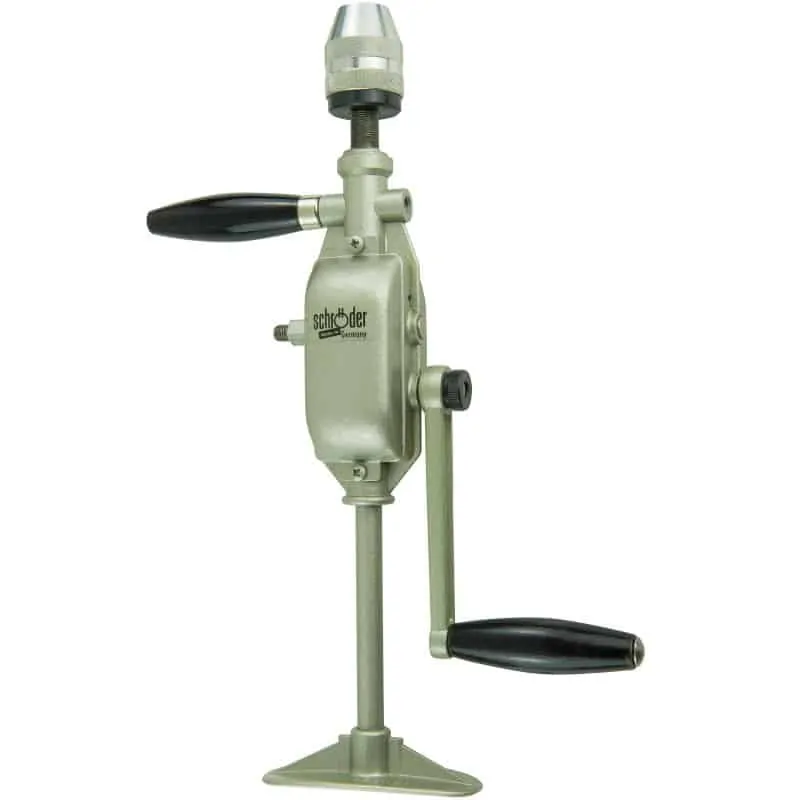
This drill is greedy when it comes to names; it’s called the belly drill, the knee drill, and the chest drill. It is similar in looks and design to the hand drill. But the difference is you use the weight of your body to push down on the drill to increase the downward force.
The curved plate on the handle fits the contours of your chest or knee. With the increased downward force, this drill bores holes in steel, iron, and hardwood. For this reason, it suits industrial workshops and blacksmiths shops.
Pros
- Bores through steel and iron.
- Great for blacksmithing.
- Increases downward force.
Cons
- Hand-operated.
- Slow work rate.
- Requires strength.
Product Specs
| Type | Hand drill |
| Used for | Hardwood, Steel, Iron, Blacksmithing |
| Difficulty | Intermediate |
| Power source | Manual |
| Price | $ |
7. Push Drill
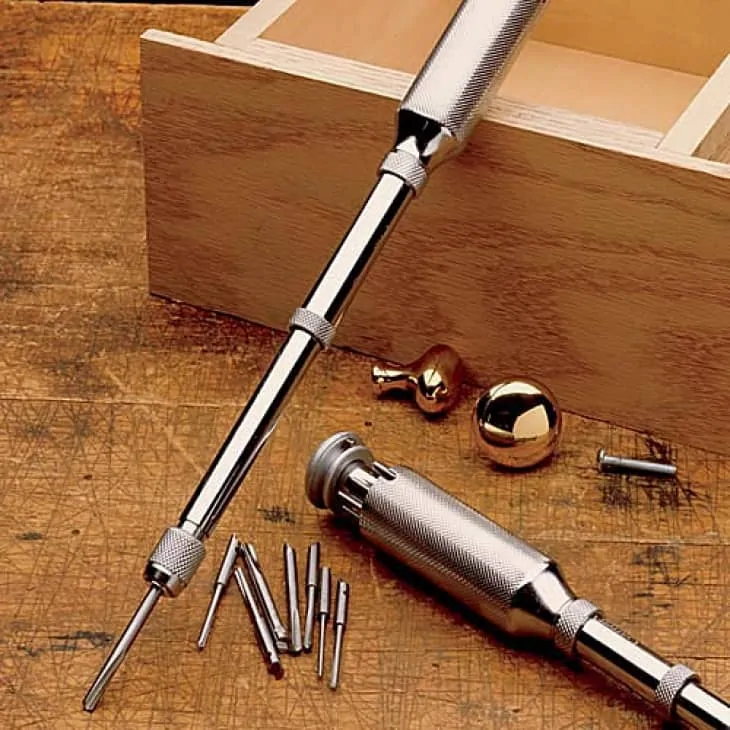
This drill is unimaginatively named because when you push the handle down, the shaft rotates. It closely resembles a screwdriver and is commonly used for minute jobs like dentistry and jewelry making.
Again, like most of the hand-operated drills, they give the user a higher degree of accuracy, making them precise and delicate tools. This appeal is not lost on woodworkers too, who value this drills ability when working on complicated and detailed projects.
Pros
- Lightweight.
- Hand-operated.
- Great for small spaces.
- Delicate.
Cons
- Specialist tool.
- Suitable for small projects.
Product Specs
| Type | Hand drill, Specialist drill |
| Used for | Jewelry making, Dentistry, Crafts, Wood |
| Difficulty | Intermediate |
| Power source | Manual |
| Price | $ |
8. Pin Chuck
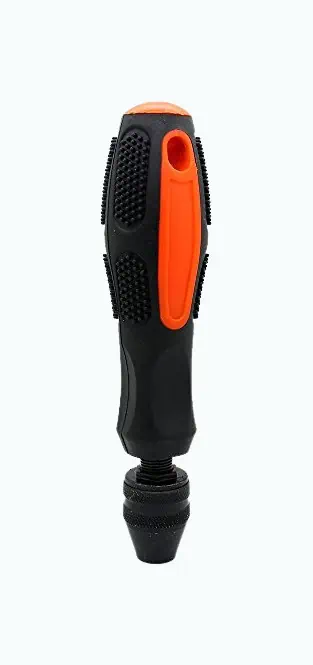
A pin chuck looks similar to a push drill, but it is much smaller. It typically holds bits as little as zero to 2.5 mm in size and is mostly used in the jewelry-making and watchmaking industry, for its precise boring abilities.
A pin chuck broadly consists of two parts, a head and collet jaws. The size of the collets varies and typically has three jaws. When you tighten the head, the jaws of the collet grip the drill bit and hold it in place.
Pros
- Precise.
- Accurate.
- Delicate.
Cons
- Requires skill.
- Slow.
- Suitable for smaller projects only.
Product Specs
| Type | Hand drill, Specialist drill |
| Used for | Jewelry making, Watchmaking |
| Difficulty | Advanced |
| Power source | Manual |
| Price | $ |
9. Corded Drill
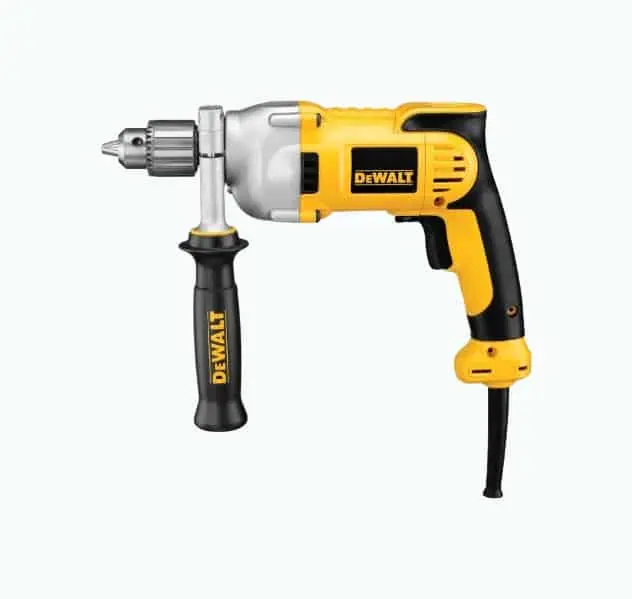
A corded drill is one of the most versatile and powerful hand tools available. It works by drawing power from a source and feeding that power through an electrical cable to the drill. These drills can be used for drilling metal, wood, and fiberglass, thanks to their high-torque motors and an endless supply of power.
Unlike cordless drills, you never need to worry that the juice will run out with a corded drill. Plus, you don’t have to pay for a spare battery as a backup. The only downside with a corded drill is you need a long extension cable if you are working away from the initial power supply.
Pros
- Best for general drilling.
- Works as a driver.
- High-torque.
- Keeps on going.
Cons
- Restricted by cord range.
- Heavy.
Product Specs
| Type | Power drill, Heavy-duty drill |
| Used for | Construction, Wood, Stonework, Masonry, Metal |
| Difficulty | Beginner to Advanced |
| Power source | Electricity, Battery |
| Price | $$ |
10. Cordless Drills

These drills were always seen as the weaker cousins of corded drills because they didn’t produce the same level of power and torque. However, newer models have not only caught up, but in some cases, they have also surpassed the corded versions.
There are obvious advantages to a cordless drill or drill driver (as they are sometimes referred to). The first being you can go anywhere with one. It means that you can work in the most remote places and not worry about a power supply to connect to.
The downside is you need a backup battery because they hold a limited charge time. Cordless drills are capable of drilling through wood, metal, plastics, and medium-density fiberboard (MDF). Harder materials like concrete and masonry tend to drain the power from the batteries too quickly.
Pros
- Go-anywhere tool.
- High-torque.
- Suitable as a driver.
- General-purpose drilling.
Cons
- Short battery life.
- Need to buy a back-up battery.
- More expensive than corded drills.
Product Specs
| Type | Power drill, Heavy-duty drill |
| Used for | Construction, Wood, Stonework, Masonry, Metal |
| Difficulty | Beginner to Advanced |
| Power source | Battery |
| Price | $$$ |
11. Pneumatic/Air Drills
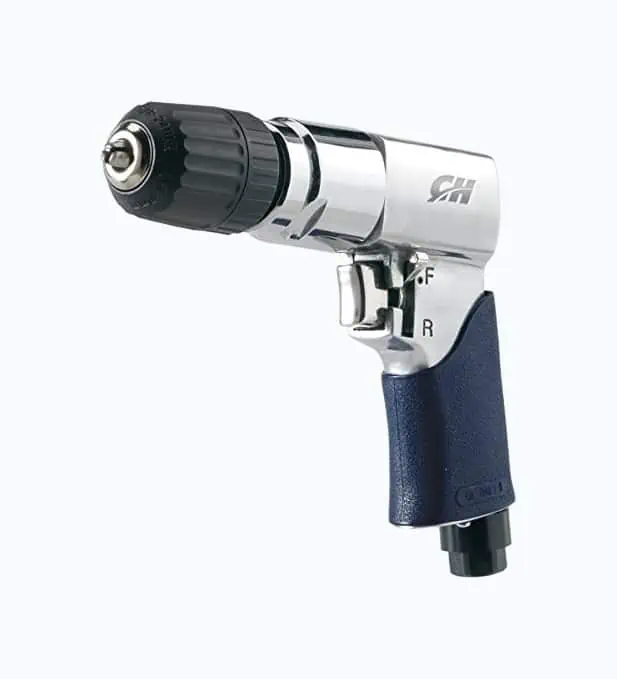
Pneumatic drills are powered by compressed air, which provides power and force to get the job done. These drills suit commercial settings like factories, production lines, and repair shops.
Because of their commercial use, pneumatic drills are rarely found in domestic circles because they are a specialized tool and expensive when compared to an electric drill. The fact that you need compressed air does not make them the ideal tool for hanging pictures in the den.
Pros
- Powerful.
- High-torque.
- Better for commercial use.
Cons
- Too powerful for home use.
- Expensive.
- Requires compressed air.
Product Specs
| Type | Power drill, Heavy-duty drill, Specialist drill |
| Used for | Construction, Wood, Stonework, Masonry, Metal, Industrial, Auto repair |
| Difficulty | Advanced |
| Power source | Pneumatic, Compressed air |
| Price | $$$ |
12. SDS/Rotary Hammer Drill
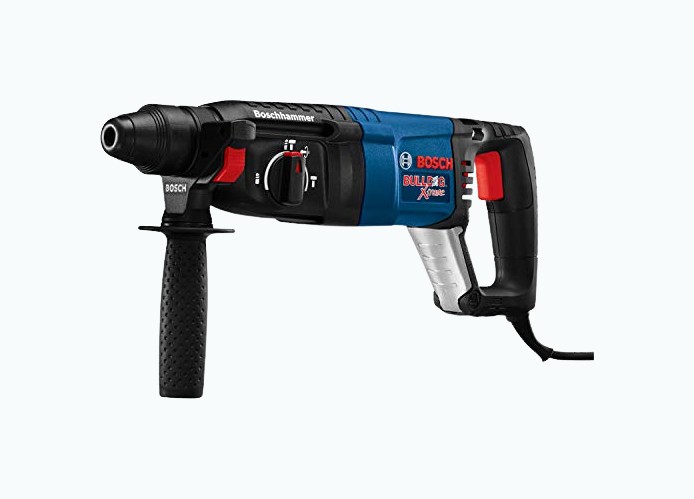
Okay, the SDS stands for the Slotted Drive System or Shaft. Specialized SDS drill bits slot into the chuck and enhance the hammer action. The hammer action comes from a mechanism inside the chuck that creates both percussive and rotational force.
The hammer action, coupled with the turning motion of the bit, makes light work of stubborn rocks and stones, as well as other hard materials.
The SDS drill was invented in 1975 by Bosch. They wanted a new tool to drill through masonry and denser materials with ease (1).
Pros
- Powerful.
- High-torque.
- Great for hard materials.
- Perfect for heavy construction.
Cons
- Limited uses.
- Not suitable for everyday use.
- Expensive.
- Heavy.
Product Specs
| Type | Power drill, Heavy-duty drill |
| Used for | Construction, Stonework, Masonry, Industrial |
| Difficulty | Advanced |
| Power source | Electricity |
| Price | $$$ |
13. Hammer Drill
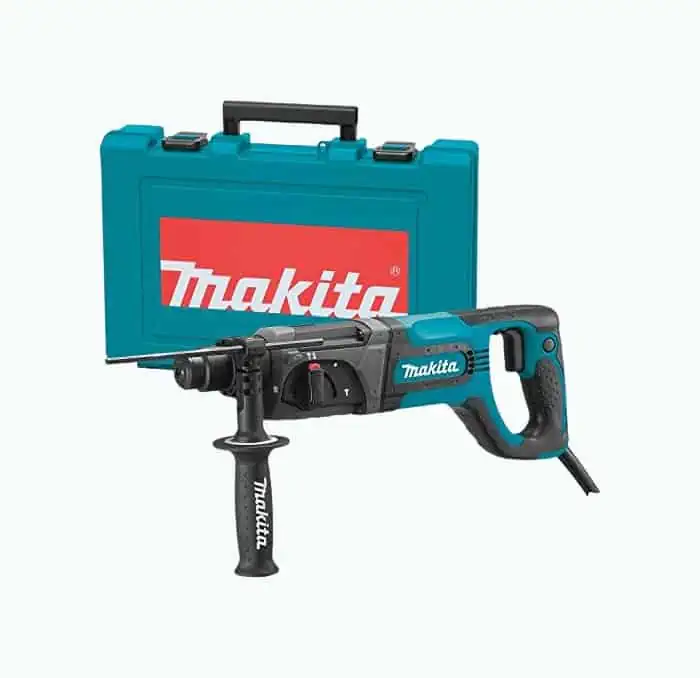
A hammer drill is a versatile tool. It provides both hammer and rotational force to drive through harder materials like stone, masonry, and rock. The hammer drill is similar to the SDS hammer drill, but it lacks the added kick the specialized carbide SDS bits provide.
Hammer drills are heavier than standard drill drivers. They also often feature auxiliary handles to help you guide the drill to keep it on course, and for additional downward force.
Pros
- Hammer action.
- Great for dense materials.
- High-torque.
Cons
- Heavy.
- Limited use.
- Expensive.
Product Specs
| Type | Power drill, Heavy-duty drill |
| Used for | Construction, Stonework, Masonry, Industrial |
| Difficulty | Intermediate to Advanced |
| Power source | Electricity, Battery |
| Price | $$$ |
14. Pillar Drill
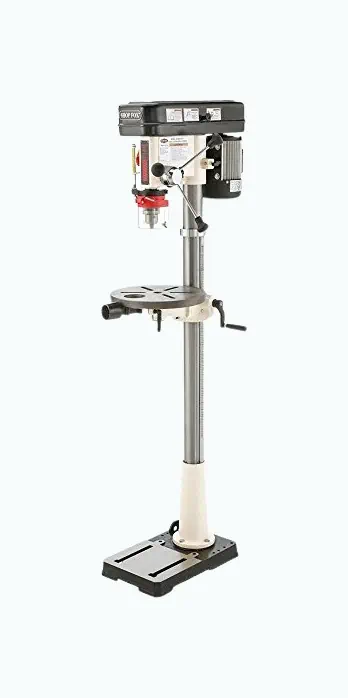
A pillar drill is a beast of a tool. Typically, they are larger than bench drills but follow the same drilling principles. A drill motor and chuck are mounted onto a pole to raise or lower the drill, depending on the material you’re working on.
The benefit of a pillar drill is that it is stable and will drill accurately and straight. There is zero chance this drill will veer off course. They are held in place on the floor by a large stand. Plus, they are excellent at speeding up the drilling process because the workpiece moves and not the drill.
Pillar drills are excellent for drilling holes in wood, metal, and MDF. The downside with a pillar drill is they have no hammer action and are ineffective on harder materials like concrete and stone. The other disadvantage is they are cumbersome and not mobile, restricting the type of projects and size of the material.
Pros
- Speed up the work rate.
- Accurate.
- Powerful.
- Suited for industrial and workshop use.
Cons
- Not mobile.
- Expensive.
- Limited use.
Product Specs
| Type | Power drill, Heavy-duty drill |
| Used for | Construction, Industrial, Wood, Metal |
| Difficulty | Intermediate to Advanced |
| Power source | Electricity |
| Price | $$$ |
15. Table Drills
No products found.
A table drill is from the same family as the pillar drill, in that it operates using the same principles of a drill mounted on to a pole. Beneath the drill is a table that holds the workpiece.
Table drills are workshop favorites, found in woodworking stations all over the world. They are less powerful than other drills but very efficient at cutting multiple holes. These drills work best with wood and other softer material.
Pros
- More portable than pillar drills.
- Stable.
- Accurate.
- Faster work rate.
Cons
- Less powerful.
- Intended for workshop settings.
Product Specs
| Type | Power drill, Heavy-duty drill |
| Used for | Wood, Soft metal |
| Difficulty | Intermediate to Advanced |
| Power source | Electricity |
| Price | $$ |
16. Drill Press
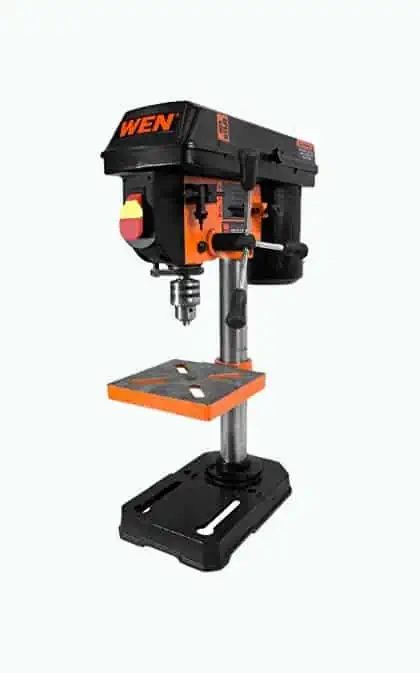
A drill press is like a table drill on steroids. It drills through harder material like metal and steel, but it is also useful when you are reaming, counterboring, countersinking, and tapping.
They look similar to table and pillar drills and fall into the same category as these other two. Sure, they share the same attributes like up and down motion and a table for the workpiece, but a drill press has a lot more power.
Pros
- Drills through hard material.
- Ideal for tapping.
- Powerful.
- High-torque.
Cons
- Specialty tool.
- Not portable.
- Expensive.
Product Specs
| Type | Power drill, Heavy-duty drill |
| Used for | Hardwood, Metal |
| Difficulty | Intermediate to Advanced |
| Power source | Electricity |
| Price | $$$ |
17. Impact Drivers

Impact drivers are stubbier and more compact when compared to drill drivers and impact wrenches. They also employ the 0.25-inch hex shank, which restricts its versatility.
Once upon a time, these tools were the preserve of professional tradespeople, but in recent times they have grown in popularity with the broader public.
They are excellent tools for driving screws and fasteners directly into wood. This makes them the go-to device if you are throwing up a wooden shed in the garden or laying decking and need something that just works with limited fuss.
Pros
- Drives screws.
- Excellent for constructing wooden frames.
- Lightweight.
- Portable.
Cons
- Hexagonal socket.
- Fewer attachments.
- Specialist tool.
Product Specs
| Type | Power drill, Heavy-duty drill, Specialist drill |
| Used for | Hardwood, Softwood, Metal |
| Difficulty | Intermediate to Advanced |
| Power source | Electricity |
| Price | $$ |
18. Impact Wrench
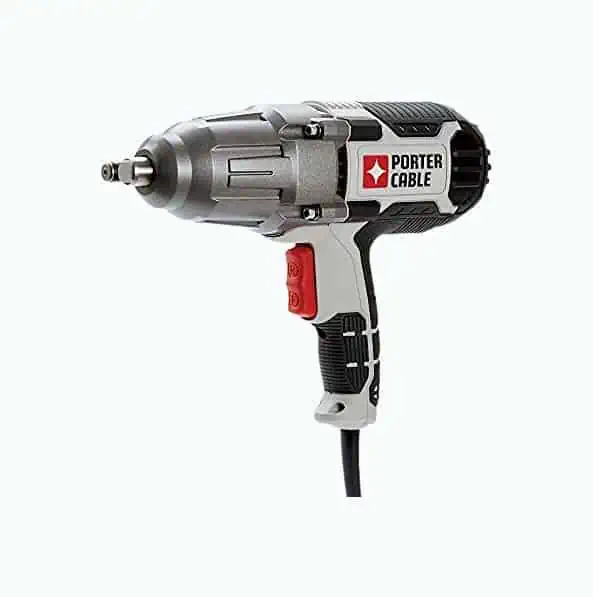
The impact wrench delivers stored energy in short bursts to maximize torque and power. It also involves minimal exertion for the user. Compressed air impact wrenches are the most common, but electric and hydraulic versions are also popular.
You find impact wrenches in professional settings like repair shops, factories, production lines, and the heavy construction industry. They are not typically found in the DIY enthusiast’s tool kit because they have very specific uses.
They tighten and loosen frozen or rusted bolts, nuts, and screws. Impact wrenches have a square shaft that accepts standard socket wrench sizes from 0.25 inches up to 3.5 inches.
Pros
- Great for commercial use.
- Powerful.
- Removes rusted bolts.
- High torque.
Cons
- Specialist tool.
- Not intended for home use.
- Some require compressed air.
Product Specs
| Type | Power drill, Heavy-duty drill, Specialist drill |
| Used for | Hardwood, Softwood, Metal |
| Difficulty | Advanced |
| Power source | Electricity, Compressed air, Hydraulic |
| Price | $$ |
19. Magnetic Drills
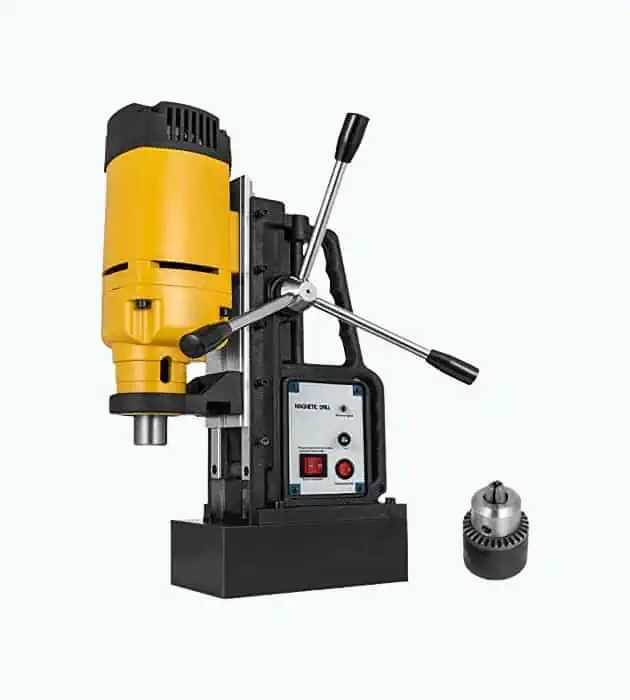
A magnetic drill is a portable drilling tool. Its base uses either permanent or electro-magnetic magnets to clamp it to the workpiece.
Although they resemble a drill press, magnetic drills are more accurate and portable, making them an ideal choice when drilling magnetic materials like steel.
They can countersink, counterbore, thread, and ream, thanks to the low RPM that reduces torque forces created by wider drill bits.
Magnetic drills can be either electric or pneumatic. They come in lightweight designs as well as automatic or semi-automatic feeds.
Pros
- Magnetically clamps to the workpiece.
- Stable.
- Accurate.
- Drills wider holes.
Cons
- Specialist tool.
- Expensive.
- Limited uses.
Product Specs
| Type | Power drill, Heavy-duty drill, Specialist drill |
| Used for | Metal |
| Difficulty | Advanced |
| Power source | Electricity |
| Price | $$$ |
20. Screwdriver Drill
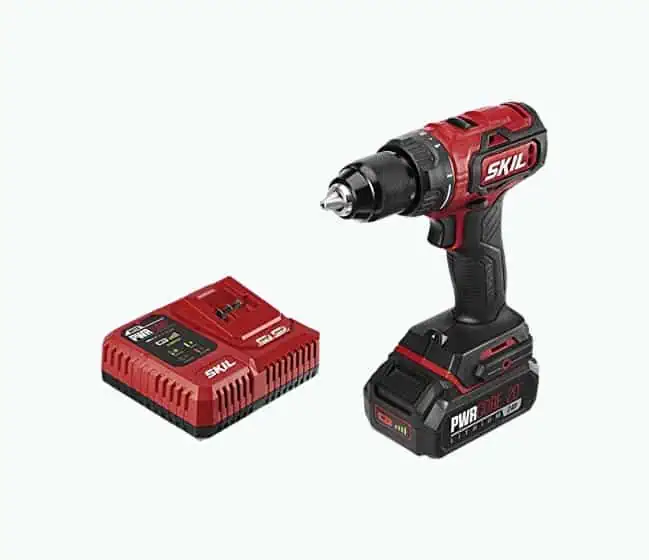
Screwdriver drills are like drills but create more torque. They are excellent tools to have when you are tackling general DIY tasks. They are best suited to driving screws in wood, drilling softwood, as well as less dense materials like plastic.
Some models have torque limiters to allow you to select the correct setting depending on the resistance of the material you are working with. They are almost always cordless and look just like a drill but smaller.
Pros
- General DIY tool.
- Perfect for softwood and plastic.
- Portable.
- Lightweight.
Cons
- Not suitable for harder materials.
Product Specs
| Type | Power drill |
| Used for | Softwood, Sheet metal, Alloys |
| Difficulty | Beginner |
| Power source | Electricity, Battery |
| Price | $ |
21. Bench Drills

The bench drill is similar to the table drill in that it drills holes in a variety of materials, from wood to metal and plastics. Unlike a table drill, which typically comes with a table, the bench drill clamps to an existing work surface.
It is a favorite of woodshops and workshops because it is lightweight and compact but delivers a punch when it needs to.
Pros
- Clamps to the worktable.
- Stable.
- Accurate.
- Portable.
Cons
- Limited uses.
- Need a bench to clamp it in place.
- Can be expensive.
Product Specs
| Type | Power drill, Heavy-duty drill |
| Used for | Wood, Metal, Alloys |
| Difficulty | Intermediate to Advanced |
| Power source | Electricity |
| Price | $$$ |
22. Auger Drill
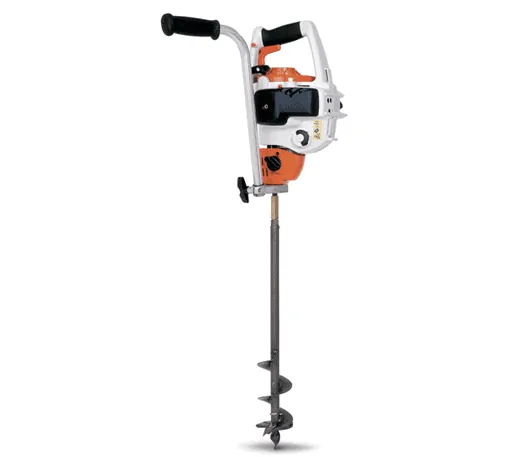
Imagine a large corkscrew, and you can picture an auger drill. Throwback from the days when drill technology was in its infancy, where the design is so simple, the mechanism has stood the test of time and is still in use today. Think of it as the grandchild of the antique drill.
The advantage of this drill is that the drilling process is slow and considered, meaning the user has greater control of the drill. It’s also useful for cleaning out drilled holes to remove debris.
You find these drills in furniture and cabinet makers workshops, as well as modern operating theaters for use during surgery.
Pros
- Greater control.
- Portable.
- Lightweight.
Cons
- Specialist tool.
- .
Product Specs
| Type | Power drill |
| Used for | Wood, Metal, Alloys |
| Difficulty | Intermediate |
| Power source | Electricity, Manual |
| Price | $ |
23. Radial Arm Drill
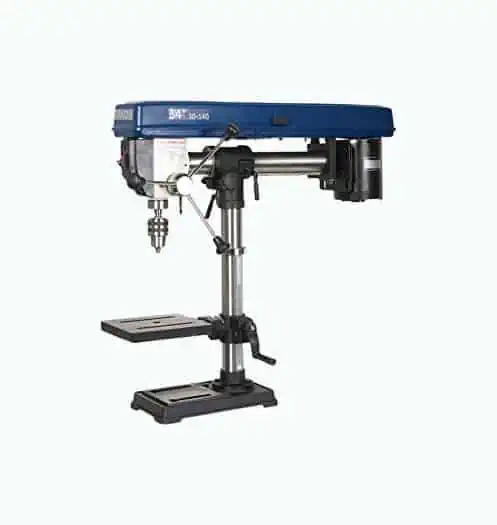
A radial arm drill is a drill mounted on an arm. The arm extends the reach of the drill so you can work on larger projects without the need to adjust the height of the drill. It is particularly useful for making lots of holes in sheet material.
Engineers are fans of this type of drill, as are woodworkers and cabinet and furniture makers because it drills through sheet metal like steel and boards like plywood and MDF.
Pros
- Accurate.
- Speeds up the work rate.
- Works with sheet material.
- Extended reach of drill.
Cons
- Specialist tool.
- Not portable.
- Expensive.
Product Specs
| Type | Power drill, Heavy-duty drill |
| Used for | Wood, Metal, Construction |
| Difficulty | Intermediate to Advanced |
| Power source | Electricity |
| Price | $$$ |
24. Ratchet Drill
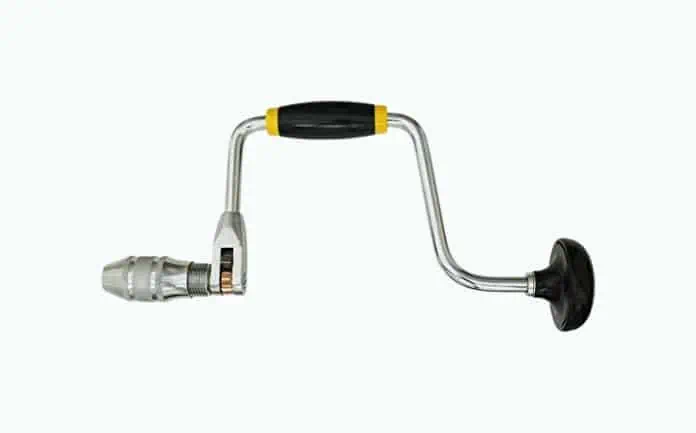
Ratchet drills come with a three-way and five-way mechanism. These drills are ideal for working in confined or awkward spaces. They are hand-operated and work by the chuck revolving intermittently by a level through a ratchet wheel and pawl.
Five-way ratchets are more expensive because they have the added ability to lock the ratchet mechanism. In contrast, the three-way version turns left and right or can disengage the mechanism completely.
Pros
- Great for confined spaces.
- No power supply required.
- Small and compact.
- Easy to master.
Cons
- Slow.
- Physical effort required.
- Specialist use.
Product Specs
| Type | Hand drill |
| Used for | Wood, Metal, Small spaces |
| Difficulty | Beginner |
| Power source | Manual |
| Price | $ |
25. Vertical Drills
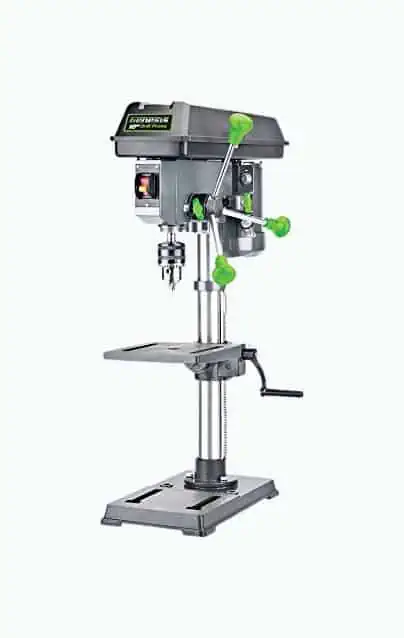
Now we are firmly back in the drill press territory. A vertical drill is a drill press mounted in an upright position. Typically, they have variable speed to enable you to adjust according to the material.
Vertical drills operate in the range of 2,500 RPM and are a staunch favorite of metalworkers.
Pros
- Accurate.
- Powerful.
- Speeds up the work rate.
- Effective on metal.
Cons
- Restricted maneuverability.
- Expensive.
- Specialist tool.
Product Specs
| Type | Power drill, Heavy-duty drill, Specialist drill |
| Used for | Wood, Metal |
| Difficulty | Intermediate to Advanced |
| Power source | Electricity |
| Price | $$$ |
26. Combi Drills
No products found.
Combi drills are an amalgamation of drills and hammer drills. You can switch between the two to cater to a myriad of household uses. This makes combi drills the most commonly found power tools in American homes.
In the main, combi drills are cordless, so they are ideal for remote working, and they have clutch control as well as high torque.
The advantage of the combi drill is that the chuck is universal, meaning it takes square, round, and hexagonal bits.
Pros
- Versatile.
- Switch between drill and hammer.
- Works on all materials.
- Typically cordless.
Cons
- Heavy.
- Expensive.
Product Specs
| Type | Power drill, Heavy-duty drill |
| Used for | Wood, Metal, Masonry |
| Difficulty | Beginner to Intermediate |
| Power source | Electricity, Battery |
| Price | $$$ |
27. Mechanic Drill
No products found.
A mechanic drill is another version of a power drill. It can handle both light and heavy work. Just like the impact driver, mechanic drills are less cumbersome than standard power drills and easier to transport.
Because they are smaller, they also make great power tools for working in confined spaces. These drills work best with hardwood, softwood, and metal.
Pros
- Lightweight.
- Portable.
- Adaptable.
Cons
- More expensive than a power drill.
Product Specs
| Type | Power drill |
| Used for | Wood, Metal |
| Difficulty | Beginner to Intermediate |
| Power source | Electricity, Battery |
| Price | $$ |
28. Hex Drill
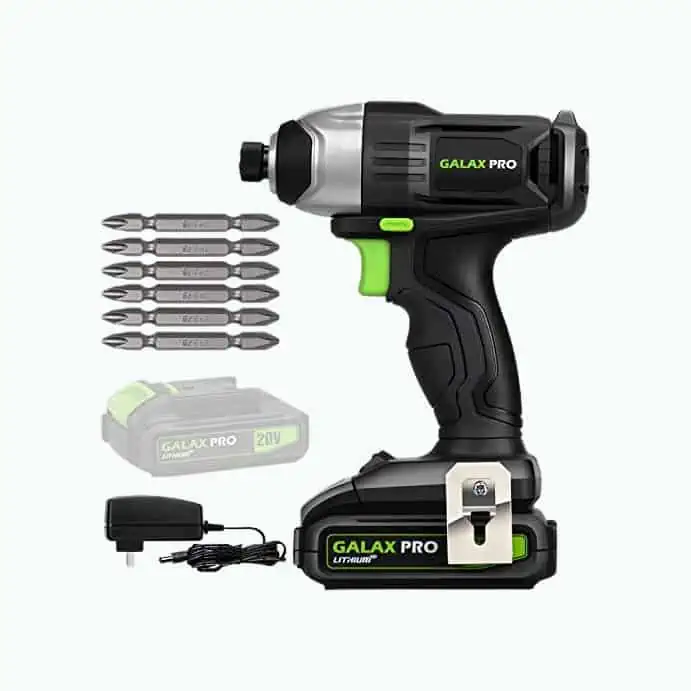
We talked earlier about impact drivers, so a hex drill incorporates the hex socket of the impact driver and puts it in a drill. The hex is typically 0.25 inches in diameter. However, you can get conversion kits that increase this size of the hex socket to accommodate other attachments. You can also find chuck adaptors that convert the hex socket into a universal one.
The disadvantage of the hex drill without the conversion kit is that it can only take a hex-shaped attachment. In comparison, drills have a universal chuck that can accommodate hex, square, and round bits. On the other hand, the advantage of hex drills is they deliver a lot of torque.
Pros
- High torque.
- Compact.
- Powerful.
- Battery and cordless varieties.
Cons
- Limited attachments.
- Hex shank reduces versatility.
- Specialist drill.
Product Specs
| Type | Power drill, Specialist drill |
| Used for | Wood, Metal |
| Difficulty | Intermediate |
| Power source | Electricity, Battery |
| Price | $$ |
29. Deck Drills
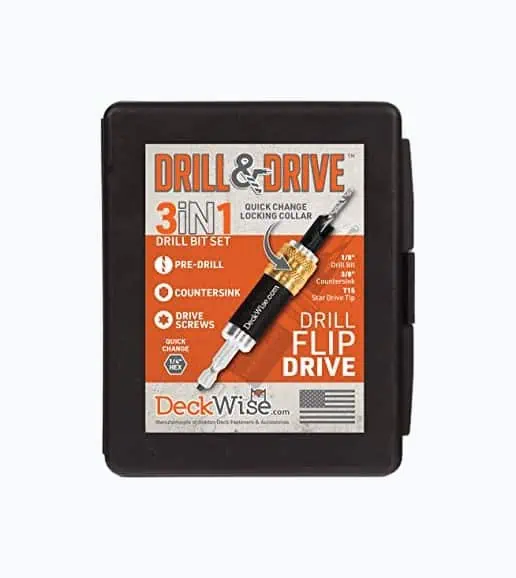
This type of drill drills holes in deck boards and sheet material. It consists of a tapered, partially threaded body with a countersink. The advantage is that it countersinks screws, so they are flush and give a neat finish.
Deck drills are specialist tools with limited use, but they cut through sheet material, including wood and metal.
Pros
- Countersinks.
- Ideal for flooring.
Cons
- Specialist tool.
- Limited uses.
Product Specs
| Type | Power drill, Specialist drill |
| Used for | Wood |
| Difficulty | Intermediate |
| Power source | Electricity |
| Price | $$ |
30. Auto-Feed Drill
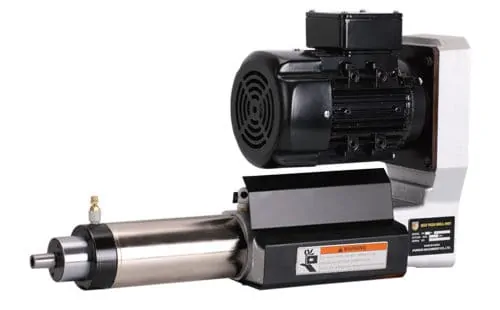
Auto-feed drills are custom drilling machines. They can drill holes quickly in succession or several holes at the same time using multiple heads. These tools are not commonly found in homes and DIY workshops but are used in professional industries.
The advantage of this type of drill is that it operates by pushing a single button, and it does the rest. The disadvantage is that the user needs to master how the drill works, unlike a hand drill that can be operated by almost anyone.
Pros
- Speeds up work rate.
- One button control.
- Drill multiple holes.
Cons
- Specialist tool.
- Better for commercial use.
- Expensive.
Product Specs
| Type | Power drill, Heavy-duty drill, Specialist drill |
| Used for | Wood, Metal |
| Difficulty | Advanced |
| Power source | Electricity |
| Price | $$$ |
31. Mill Drill

Mill drills are smaller and lighter than milling machines but combine a belt-driven drill press with the same functionality of a drill press table. This decreased size means that they have domestic uses in home workshops across the world.
In the right hands, this drilling machine can handle a heavy workload quickly, which means it will speed up your project immeasurably.
Pros
- Speeds up projects.
- Accurate.
- Heavy-duty.
Cons
- Specialist tool.
- Expensive.
- Requires some skill to operate.
Product Specs
| Type | Power drill, Heavy-duty drill, Specialist drill |
| Used for | Wood, Metal |
| Difficulty | Advanced |
| Power source | Electricity |
| Price | $$$ |
FAQs
You Know the Drill
So, there you have it. Who knew there were so many drills to choose from?
Sure, some of these types of drills can be placed into drill-type groups like hammer drills, upright and bench-style drills, and hand-operated drills. But each has a use, and although some look the same, they have subtle differences.
Knowing when and where to use them is the key.
